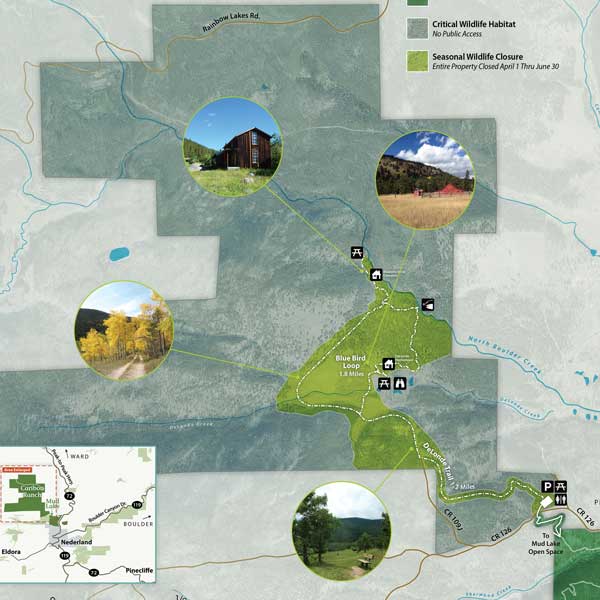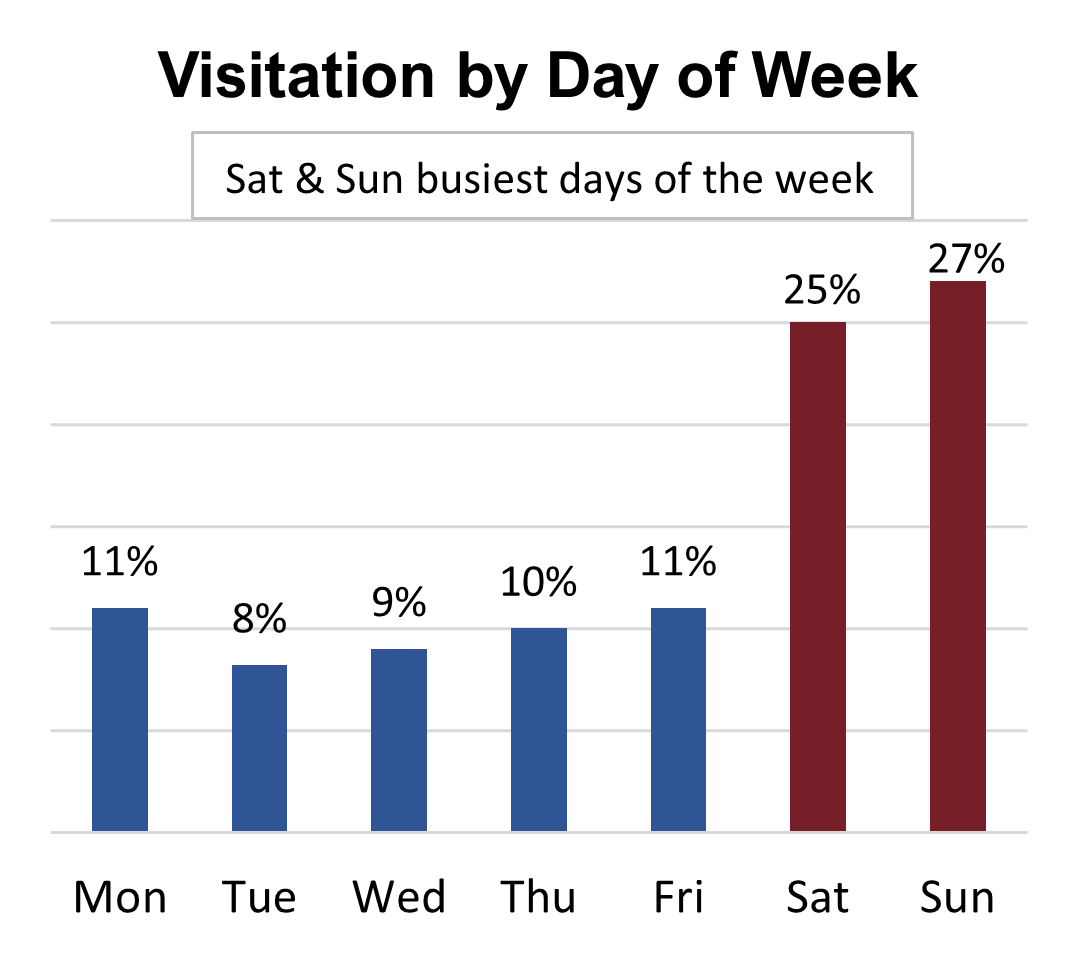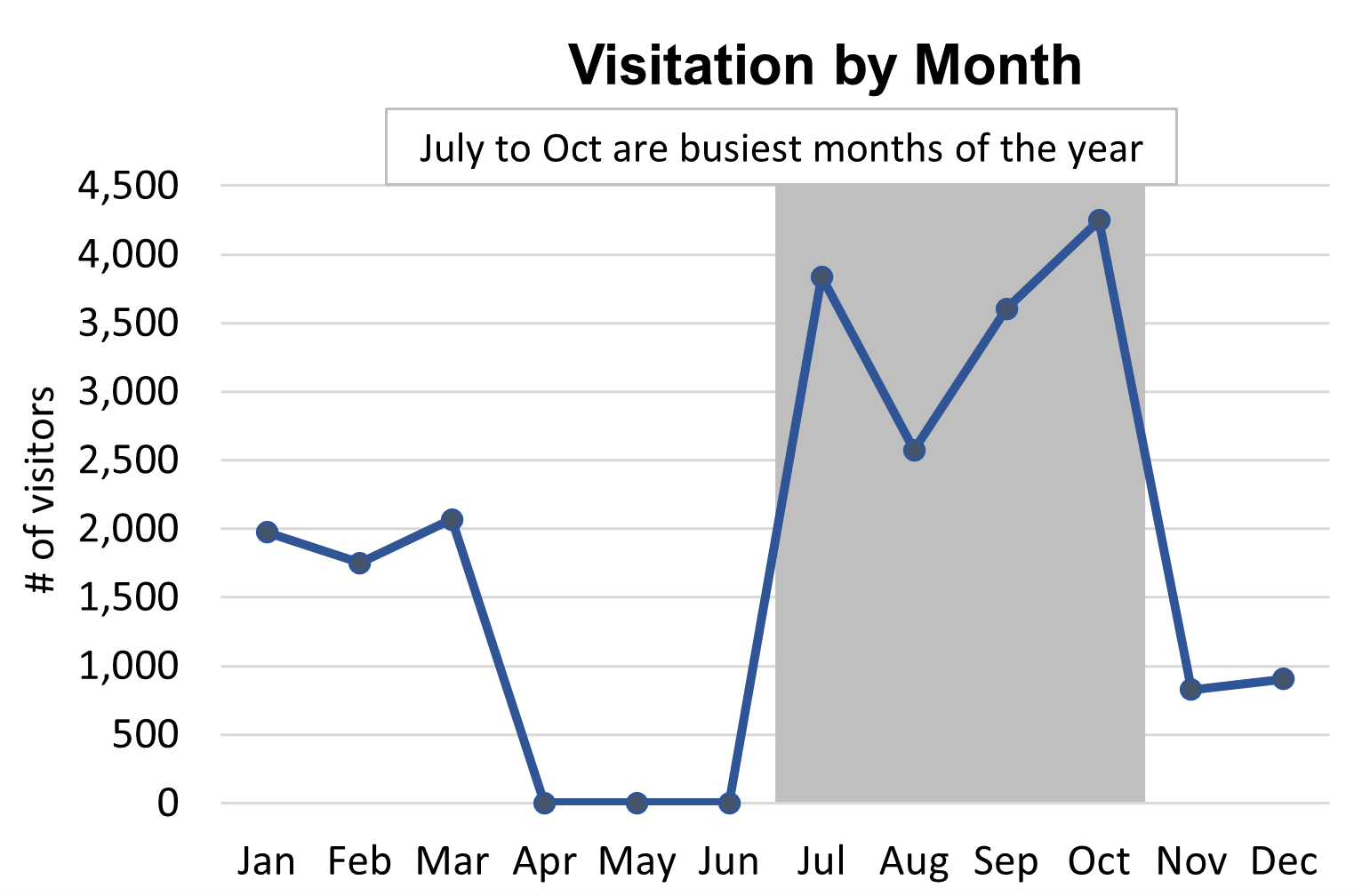In the shadow of the Continental Divide, Caribou Ranch offers a variety of landscapes for you to explore including forests, meadows, wetlands and a historical mining complex. The park is closed annually from April 1 through June 30 to protect spring migratory birds and elk calving and rearing.
Caribou Ranch
Rules & Regulations






Trailhead Amenities
Parking is allowed on the south side of CR 126 when the lot is full.
Seasonal Closure
Caribou Ranch is closed annually from April 1 through June 30 to protect spring migratory birds and elk calving and rearing.
The 2,151 acres of Caribou Ranch are located between 8,300 and 10,000 feet, in the montane life zone. At this altitude, beautiful summer wildflowers bloom later here than at lower elevations. The property offers a variety of landscapes to explore including wetlands, meadows, streams and forests. The presence of water and forests make the property ideal for moose, but many species of mammals and birds call this property home.
Mammals
- American beaver
- Black bear
- Chickaree
- Coyote
- Elk
- Least chipmunk
- Little brown bat
- Long-tailed weasel
- Meadow vole
- Moose
- Northern pocket gopher
- Nuttall’s cottontail
- Snowshoe hare
- Yellow-bellied marmot
Amphibians & Reptiles
- Striped chorus frog
- Western terrestrial garter snake
White Wildflowers
- Cutleaf daisy (Erigeron compositus)
- Mariposa lily (Calochortus gunnisonii)
- Milkvetch (Astragalus spp)
- Mouse ear chickweed (Cerastium spp)
- Northern bedstraw (Galium boreale)
- Porter aster (Aster porteri)
- Wild onion (Allium geyeri)
- White fairy trumpet (Ipomopsis candida)
- Yarrow (Achillea lanulosa)
Yellow Wildflowers
- Blanket flower (Gaillardia aristata)
- Blackeyed susan (Rudbeckia irta)
- Cinquefoil (Drymocallis sp, Potentilla sp)
- Common sunflower (Helianthus annuus)
- Golden banner (Thermopsis divaricarpa)
- Gumweed (Grindelia squarrosa)
- Hairy false golden aster (Heterotheca villosa)
- Heart-leaf arnica (Arnica cordifolia)
- Senecio (senecio sp)
- Sulphur flower (Eriogonum umbellatum)
- Tall false dandelion (Agoseris glauca)
- Western wallflower (Erysimum asperum)
- Whiskbroom parsley (Harbouria trachypleura)
- Yellow stonecrop (Amerosedum lanceolatum)
Pink, Orange & Red Wildflowers
- Fairy trumpet -Scarlet gilia (Ipomopsis aggregate)
- Lambert’s loco – Colorado loco (Oxytropis lambertii)
- Pinedrops (Pterospora andromedea)
- Pink pussytoes (Antennaria rosea)
- Scarlet paintbrush (Castilleja miniata)
- Shooting star (Dodecatheon pulchellum)
- Wild geranium (Geranium caespitosum)
Purple & Blue Wildflowers
- Colorado columbine (Aquilegia coerulea)
- Greenleaf (low) penstemon (Penstemon virens)
- Common harebell (Campanula rotundifolia)
- One-sided penstemon (Penstemon secundiflorus)
- Smooth aster (Aster laevis)
- Tall chiming bells (Mertensia ciliata)
- Wild iris (Iris missouriensis)
Green Wildflowers
- Green gentian – Monument plant (Frasera speciosa)
- Prairie sage (Artemisia ludoviciana)
- Fringed sage (Artemisia frigida)
Shrubs
- Common juniper
- Kinnikinnick
- Wild rose
Trees
- Aspen
- Douglas fir
- Limber pine
- Lodgepole pine
- Ponderosa pine
- Rocky Mountain juniper (Juniperus sscopulorum)
Much of the rock at Caribou Ranch is Boulder Creek granodiorite and biotite (black mica) gneiss. These rocks formed deep beneath the earth’s surface around 1.7 billion years ago. Uplift and erosion exposed these rocks at the surface where we see them today. One and a half million years ago glaciers formed above 8,000 feet and carved U-shaped valleys as they moved down-slope helping shape Caribou Ranch Open Space.
The Blue Bird Mine
Blue azurite, often found in silver ore, gave Caribou Ranch’s Blue Bird Mine its name. In the 1870s, miners flocked to work at the Blue Bird, as well as other mines in the area. In 1905, Blue Bird became a tourist destination on the newly completed Eldora Line of the Switzerland Trail of America.
The Name
The origin of the name Caribou is said to have come from William Martin, a prospector, who discovered the Caribou mine. Martin had been mining in the Cariboo Range in British Columbia and saw a connection with the two places.
Historical Buildings
- Blue Bird Mine Complex – includes a bunkhouse, remains of a log building, mining company house, chicken coops, smoke house, the foundation of a mill, mine shafts, and tracks for ore carts
- DeLonde Homestead – a modified homestead that reflects several periods in the ranch’s development
Van Vleet
In 1936, Lynn W. Van Vleet purchased the Ranch and established the first Arabian horse breeding operation in Colorado. In addition to sponsoring public Arabian horse shows, the Van Vleet Ranch hosted two Warner Brothers films, Arabians of the Rockies and Sons of Courage.
Stagecoach Film
Portions of the 1966 film Stagecoach were filmed at Caribou Ranch and featured Ann-Margret, Red Buttons and Bing Crosby. The film was a remake of the 1939 western with the same name. If you are interesting in watching a promotional video for the film, contact Sheryl Kippen.
Music
In 1971 a barn was converted to a recording studio on private property near the open space. This studio, called Caribou Ranch, attracted artists such as U2, Billy Joel, Chicago, Elton John, Rod Stewart, and many others. The studio closed after a March 1985 fire destroyed the control room.












